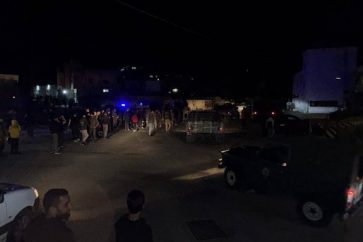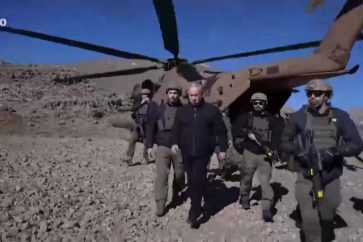‘Israel’ used widely banned cluster munitions in its recent 13-month war in Lebanon, photos of munition remnants in south Lebanon seen by the Guardian suggest.
The images, which have been examined by six different arms experts, appear to show the remnants of two different types of Israeli cluster munitions found in three different locations: south of the Litani River in the forested valleys of Wadi Zibqin, Wadi Barghouz and Wadi Deir Siryan.
The evidence is the first indication that Israel has used cluster munitions in nearly two decades since it employed them in the 2006 Lebanon war. It would also be the first time that Israel was known to have used the two new types of cluster munitions found – the 155mm M999 Barak Eitan and 227mm Ra’am Eitan guided missiles.
Cluster munitions are container bombs which release many smaller submunitions, small “bomblets”, over a wide area the size of several football fields. The use of cluster munitions is widely banned as up to 40% of submunitions do not explode upon impact, posing a danger to civilians who might later stumble upon them and be killed when they explode.
To date, 124 states have joined the convention on cluster munitions, which forbids their use, production and transfer. ‘Israel’ is not a party to the convention and is not bound by it.
“We believe the use of cluster munitions is always in conflict with a military’s duty to respect international humanitarian law because of their indiscriminate nature at time of use and afterwards,” said Tamar Gabelnick, the director of the Cluster Munition Coalition. “Their wide area impact means they cannot distinguish between military and civilian targets and the cluster munition remnants kill and maim civilians for decades after use.”
The Israeli military neither confirmed nor denied its use of cluster munitions but said it “uses only lawful weapons, in accordance with international law and while mitigating harm to civilians”.
Lebanon in particular has a painful history with cluster munitions. Israel blanketed Lebanon with 4m cluster bombs in the final days of the 2006 war, with an estimated 1m failing to explode. The presence of unexploded cluster bombs continues to make life in south Lebanon dangerous, with more than 400 people killed by unexploded bomblets since 2006.
The huge number of unexploded cluster bombs in Lebanon was a main driving factor for the drafting of the cluster convention in 2008.
Despite not being a party to the convention, Israeli officials condemned Iran’s use of cluster munitions in Israel during this summer’s 12-day war. “The terror regime seeks to harm civilians and even used weapons with wide dispersal in order to maximise the scope of damage,” said the Israeli military spokesperson, Brig Gen Effie Defrin, after an Iranian strike used cluster munitions in populated areas in southern Israel.
Images of the remnants of the first cluster munition, a 155mm M999 Barak Eitan advanced anti-personnel munition produced by the defence contractor Elbit Systems in 2019, were verified by six different arms experts, including Brian Castner, the head of crisis research at Amnesty International, and NR Jenzen-Jones, the director of Armament Research Services, a technical intelligence consultancy specialising in arms and munitions analysis. Elbit Systems did not respond to a request for a comment.
Each M999 artillery shell releases nine submunitions which explode into 1,200 tungsten shards, according to a US army primer on the weapon.
“Cluster munitions are banned internationally for a reason. They are inherently indiscriminate and there is no way to employ them lawfully or responsibly, and civilians bear the brunt of the risk as these weapons stay deadly for decades to come,” said Castner.
Source: Al-Manar English Website




